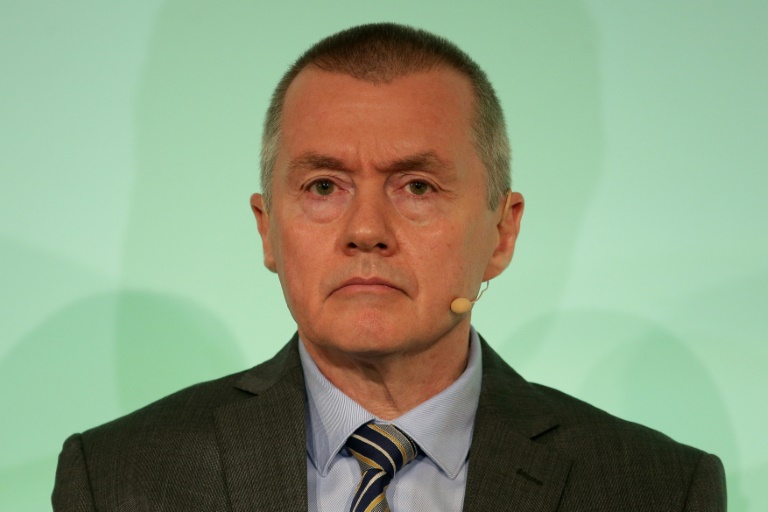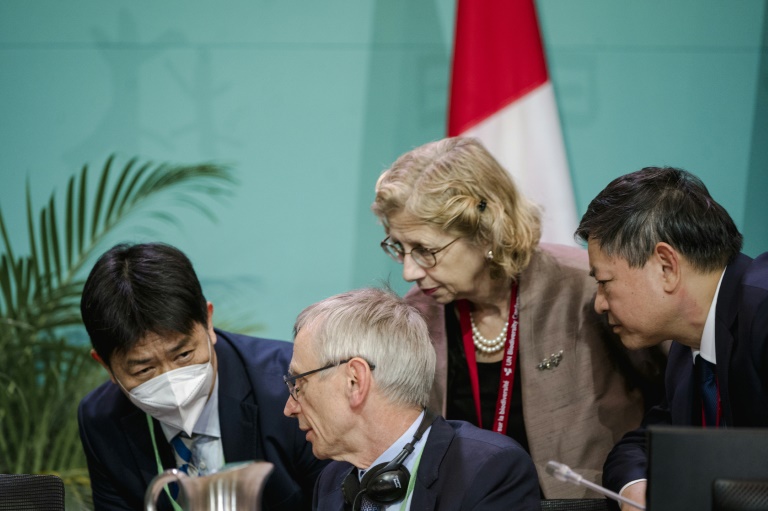The world’s airlines pledged to reach “net zero” carbon emissions by 2050 on Monday even as a trade group forecast profit losses from the pandemic extending into next year.
“For aviation, net zero is a bold, audacious commitment. But it is also a necessity,” Willie Walsh, director general of the International Air Transport Association (IATA), told top airline executives meeting in Boston.
“The important decision that we must make today will secure the freedom to fly for future generations.”
The promise comes ahead of the United Nations climate change conference (COP26) in Britain amid rising public clamor for action.
IATA represents 290 member airlines comprising 82 percent of pre-pandemic global air traffic, and its pledge follows the lead of Europe’s aviation industry which has embraced the European Union’s emissions goals.
The new commitment comes 12 years after IATA unveiled its first plan to reduce airline CO2 emissions by 50 percent by 2050 compared to 2005 levels.
But Walsh told the gathering that the industry must take more forceful action given the urgency of the problem.
The airline industry currently accounts for about three percent of global emissions. To reach the net zero goal, it will need a steady ramp-up of renewable jet fuel, other efficiency improvements and the use of carbon capture storage and offsets.
Proof of the industry’s good faith, Walsh assured, is that airlines “invested hundreds of billions of dollars in more fuel-efficient aircraft,” with fleet fuel efficiency improving by over 20 percent in a decade.
The dramatic tightening of the mid-century targets did not require a vote, in accordance with IATA statutes, but was adopted by consensus as no member raised a firm objection that would have blocked the move.
The meeting nevertheless saw Chinese airlines stress that the 2050 objective was inconsistent with the goal adopted by the government in Beijing, which aims for carbon neutrality by the year 2060.
– More losses ahead –
“Many in this room — individually or in groups — have already taken this step,” Walsh told the executives.
“For others, this will be an additional challenge at a very difficult time,” with the industry hard hit by global effects of the coronavirus pandemic.
Earlier Monday, IATA offered its latest accounting of red ink facing the industry in the wake of the pandemic.
Global airlines will lose an estimated $51.8 billion this year and another $11.6 billion in 2022, according to the group’s forecast.
Walsh described the shortfall as “enormous,” but said the industry is “well past the deepest part of the crisis.”
The recovery varies by region, with North America the only area projected to generate positive profits in 2022.
Europe is forecast to remain in the red, with losses of $9.2 billion in 2022, compared with a loss of $20.9 billion expected this year. The region’s carriers will see a recovery in intra-European travel, but long-haul travel will remain limited, IATA said.
Carriers in the Asia-Pacific region, Latin America, the Middle East and Africa are all expected to see smaller losses in 2022 compared with this year.
IATA projected that total passenger numbers of 3.4 billion in 2022, similar to 2014 levels, but below the 4.5 billion in 2019.
“People have not lost their desire to travel, as we see in solid domestic market resilience. But they are being held back from international travel by restrictions, uncertainty and complexity,” said Walsh, adding that more governments see vaccinations “as a way out of this crisis.”









